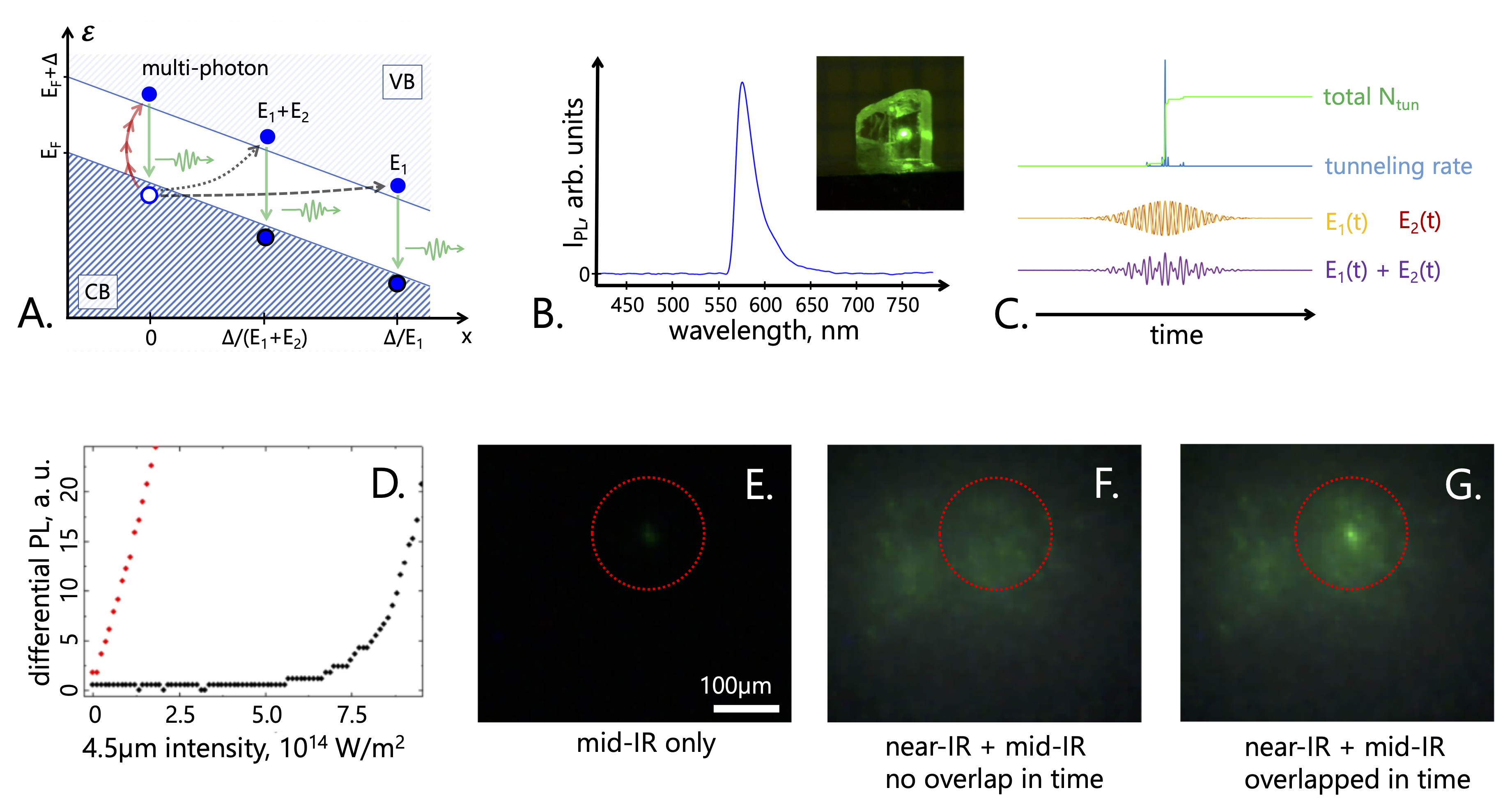Conventional photodetectors operate by absorbing photons to create electron-hole pairs, which requires materials with band gaps smaller than the photon energy of the detected field. Detecting low-frequency optical fields, such as those in the near-infrared (IR) to terahertz (THz) range, presents a significant challenge due to the scarcity of suitable materials. In our lab, we have discovered that certain perovskites exhibit optically induced quantum tunneling, also known as the Schwinger effect, at relatively low optical excitation fluences. This project aims to explore this quantum electrodynamics (QED) phenomenon in depth and develop its applications for highly sensitive, ultrabroadband light detection and imaging.

- A) Schematic diagram of ionization across the energy gap ∆ due to multiphoton process, and due to tunneling under the influence of different applied field amplitudes (E1 and E1 + E2). It can be seen that the magnitude of E determines the width of the forbidden range, thus affecting the net tunneling rate exponentially (see the text for details);
- B) Photoluminescence from a lead-halide single crystal sample (CsPbBB3) pumped by λ = 4μm mid-infrared radiation; C) Tunneling under the influence of the of alternating fields E1(t) and E2(t) (yellow and red); due to exponential sensitivity of the tunneling rate (blue) on the magnitude of the field, the tunneling rate peaks at the maximum of the total field (magenta); consequently the total number of transitions (green) depends only on the sum of the amplitudes of applied time-dependent fields.
- D) Differential photoluminescence (PL) as a function of mid-infrared intensity “AC-biased” biased with near-infrared beam.
- E) to F): Spatial profile of AC-biasing in an abraded sample of MAPbBr3: spatial profile of cumulative PL with near-infrared and mid-infrared pulses not overlapped- (panel F) and overlapped in time (panel G); E) PL produced by the mid-infrared pulse alone; red circles in F)-G) mark the position of the mid-infrared beam.
